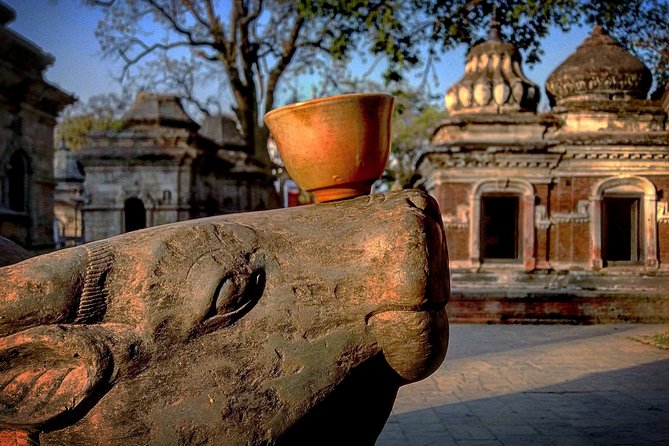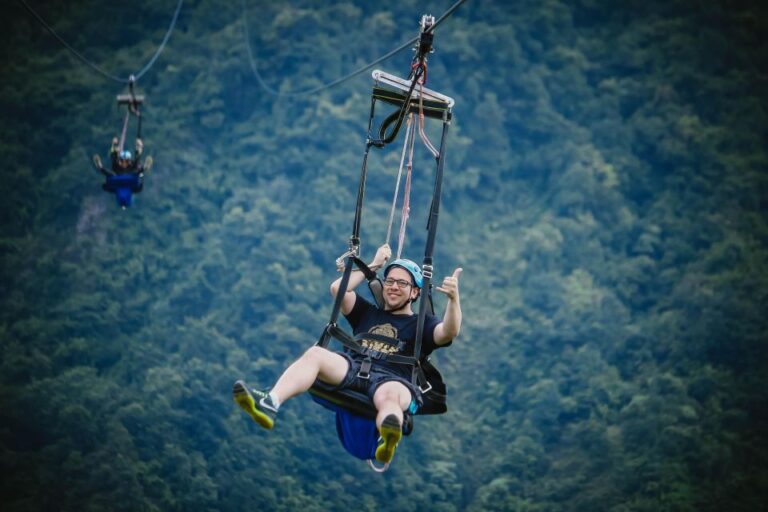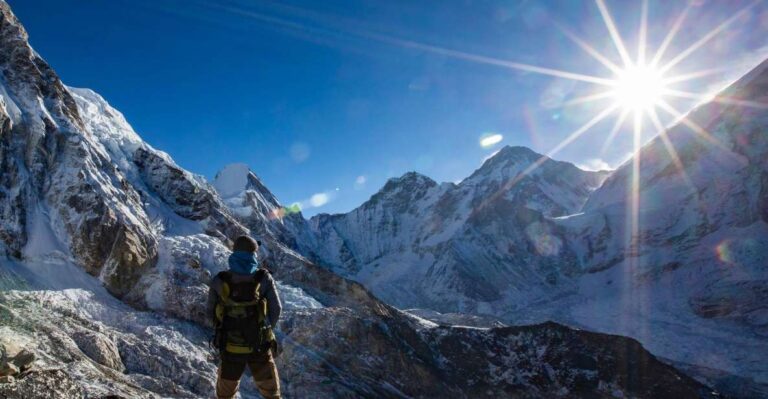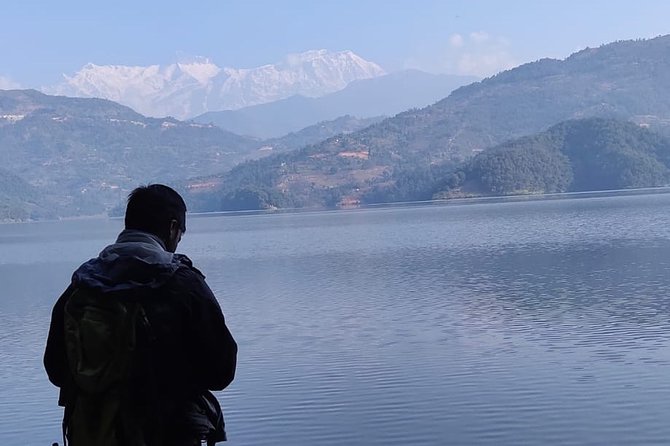Everest Base Camp Trekking – 12 Days
Have you ever wondered what it feels like to stand at the base of the world’s highest peak, Mount Everest?
The 12-day trek to Everest Base Camp offers a glimpse into this legendary journey, where adventurers can witness the majesty of the Himalayas up close.
But what challenges await trekkers on this iconic trail?
The path to Everest Base Camp is not just about reaching a destination; it’s a test of endurance, resilience, and determination.
Join the discussion to uncover the secrets of this unforgettable expedition.
Just The Basics
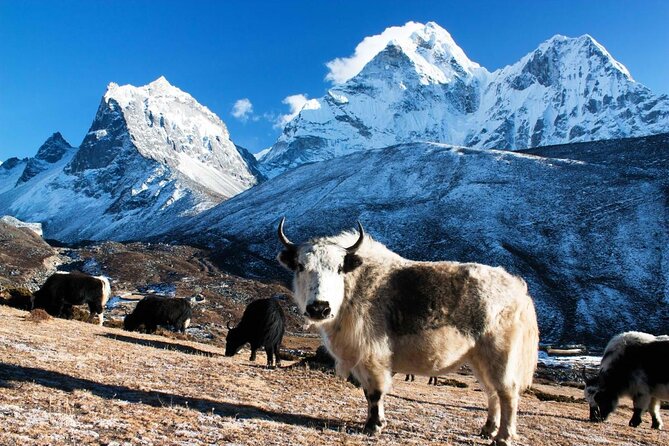
- Strenuous 12-day trek reaching 17,598 feet
- Experienced Sherpa guide and porter support
- Stunning views and basic teahouse accommodations
- High altitude challenges, physical fitness crucial
It's also worth checking out some other tours and experiences nearby.
Trip Overview
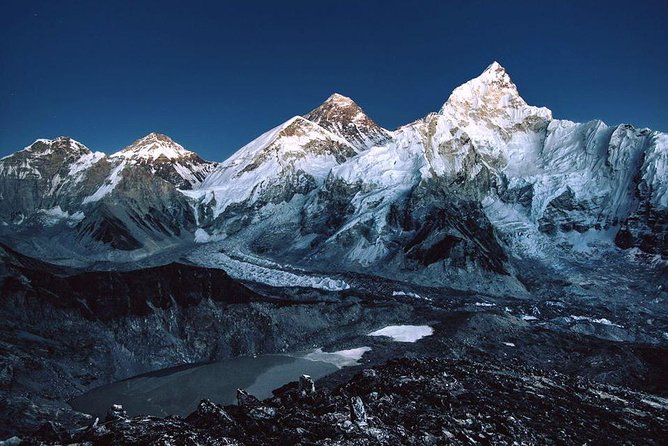
Embark on an exhilarating 12-day journey through the breathtaking landscapes of the Everest Base Camp Trekking adventure.
When preparing for this epic trek, packing essentials such as proper gear, including trekking poles and sturdy boots, are vital.
The acclimatization schedule is carefully planned to help trekkers adjust to the high altitude gradually, reducing the risk of altitude sickness.
Along the way, trekkers will have the opportunity to savor local cuisine and engage in cultural interactions with the friendly Sherpa people.
These enriching experiences offer a glimpse into the unique traditions and way of life in the Himalayas, making the journey not just physically rewarding but culturally immersive as well.
Altitude and Difficulty
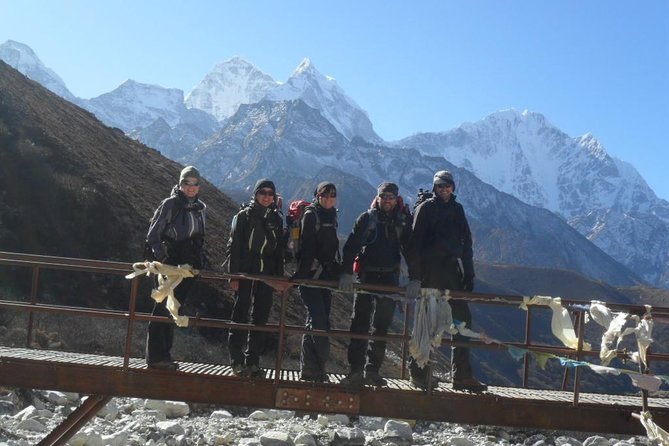
Navigating the high altitudes and challenging terrain of the Everest Base Camp Trekking requires trekkers to be well-prepared both physically and mentally. Altitude acclimatization is crucial to prevent altitude sickness, with the trek reaching heights of 17,598 feet.
Fitness training beforehand can significantly aid in coping with the strenuous demands of the journey. Trekkers are advised to focus on cardiovascular exercises and strength training to build endurance. Proper acclimatization days are incorporated into the trek to help the body adjust to the thinning air.
It’s essential to listen to your body, stay hydrated, and follow the guidance of experienced guides to ensure a safe and enjoyable trekking experience amidst the high altitudes and challenging conditions.
Accommodation Details
Amidst the breathtaking landscapes of the Everest Base Camp Trekking, trekkers will find comfortable accommodation in traditional teahouses along the route. These tea house accommodations offer a unique insight into Sherpa culture and provide a cozy place to rest after a day of trekking. Trekkers can also experience mountain lodges that showcase the essence of Sherpa hospitality and enjoy delicious local cuisine. Below is a table outlining some key details about the accommodation options along the trek:
| Accommodation Type | Amenities |
|---|---|
| Teahouses | – Twin-share rooms |
- Basic facilities
- Warm blankets |
| Mountain Lodges | – Shared dining areas - Traditional decor
- Hot meals |
Trekkers can look forward to a blend of comfort and culture during their stay in these accommodations.
Inclusions and Services

Along the Everest Base Camp Trekking route, trekkers can anticipate a comprehensive array of inclusions and services that enhance their overall trekking experience. The journey includes insights into Sherpa culture, allowing trekkers to learn about the traditions and lifestyle of the local Sherpa people.
Accommodation in cozy teahouses along the trail provides a unique experience, immersing trekkers in the mountain culture. Plus, services such as experienced Sherpa guides, porters, necessary permits, and a well-equipped first aid kit ensure safety and convenience throughout the trek.
Trekkers can also enjoy the convenience of a round-trip airfare between Kathmandu and Lukla, eliminating the need for a long bus journey to the trailhead. These inclusions and services aim to make the Everest Base Camp trek a memorable and enjoyable adventure.
Logistics and Meeting Point
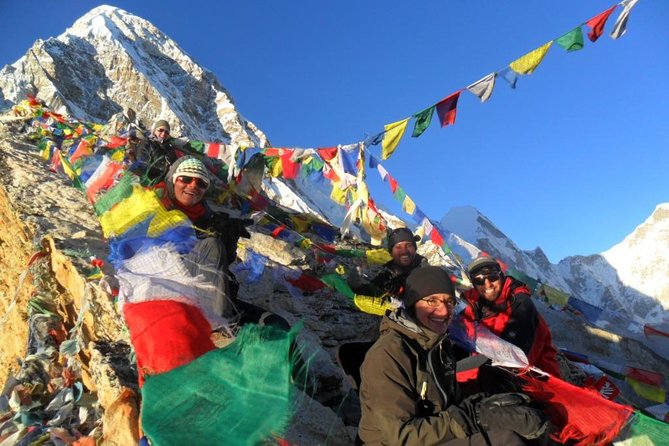
Guests are welcomed at their hotel’s reception for pickup as the starting point for the Everest Base Camp trekking logistics and meeting arrangements in Thamel, Kathmandu. While preparing for this adventure, it’s essential to consider the following logistical aspects:
-
Meeting Arrangements:
- Confirm the pickup time with the local provider in advance.
- Ensure all necessary documentation and permits are in order.
- Be ready for the activity to conclude back at the meeting point in Thamel.
-
Transportation Options:
- Pickup services are available upon request for added convenience.
- Round-trip airfare between Kathmandu and Lukla is included in the package.
- Discuss any specific transportation needs or concerns with the trekking organizer.
Preparation Essentials
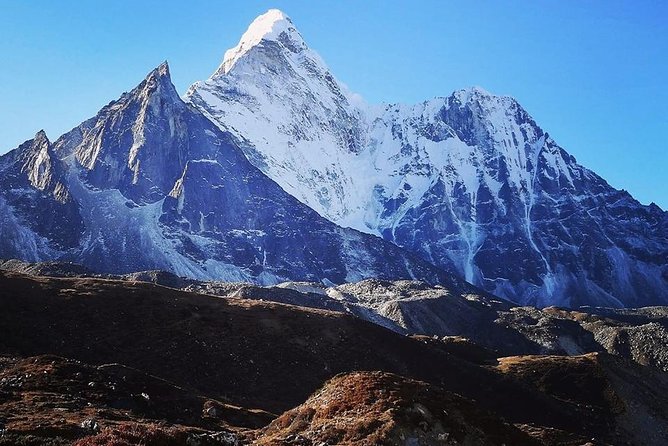
Proper physical fitness and adequate gear are essential for preparing to undertake the Everest Base Camp trekking adventure. Altitude sickness is a significant concern at 17,598 feet, so acclimatization and recognizing symptoms are crucial. A comprehensive gear checklist ensures trekkers are well-prepared for the journey ahead. Here’s a simple guide to essential gear:
| Gear Checklist | Altitude Sickness Prevention |
|---|---|
| Trekking Boots | Stay hydrated |
| Warm Clothing | Ascend gradually |
| Backpack | Recognize symptoms |
| Sleeping Bag | Descend if necessary |
Physical Challenges
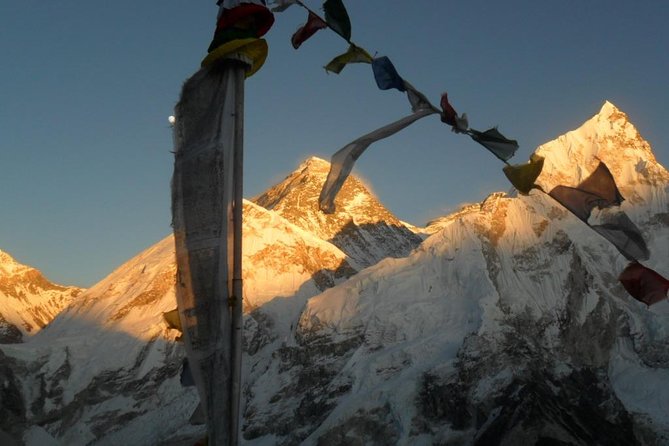
Preparation with proper physical fitness and gear is essential for tackling the physical challenges of the Everest Base Camp trekking, including high altitudes and strenuous terrain. Here are key factors to consider:
-
Altitude Acclimatization
- Gradual ascent to allow the body to adjust.
- Adequate hydration to combat altitude-related issues.
- Recognizing symptoms of altitude sickness and taking necessary precautions.
-
Trekking Gear
- Insulated layers for varying temperatures.
- Quality hiking boots for rocky paths.
- Trekking poles for stability and reducing strain on joints.
-
Physical Endurance
- Regular cardio and strength training before the trek.
- Stamina-building exercises for long hours of walking.
- Mental preparedness for the challenges ahead.
Safety Measures
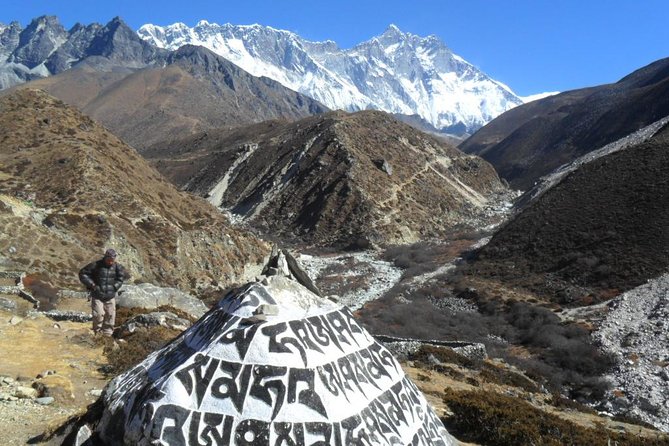
To ensure trekker safety during the Everest Base Camp trekking adventure, comprehensive measures have been put in place. Emergency protocols are established to handle any unforeseen situations promptly.
Experienced guides are trained to assist with altitude sickness and other health concerns. Hydration tips are crucial; trekkers should drink plenty of water to stay hydrated at high altitudes. Acclimatization days are scheduled to help the body adjust gradually.
Group trekking enhances safety and provides support along the journey. Weather conditions are closely monitored, and trekking plans may be adjusted accordingly. Plus, emergency evacuation plans are in place to ensure swift action if needed.
Following these safety measures, trekkers can enjoy the journey to Everest Base Camp with peace of mind.
Local Customs Awareness
Understanding and respecting local customs is essential for trekkers embarking on the Everest Base Camp journey, enriching their experience and fostering positive interactions with the Nepalese people along the way.
When trekking in this region, cultural etiquette plays a significant role in building rapport with locals. Trekkers should be mindful of communication barriers that may arise due to language differences, using gestures and simple English phrases to bridge the gap.
It’s important to greet locals with a ‘Namaste’ and be aware of traditional customs like removing shoes before entering homes or temples. By showing respect for local traditions and being open to learning, trekkers can create meaningful connections with the Nepalese people they encounter.
Flight and Weather Considerations
When planning the Everest Base Camp trek, trekkers must consider the implications of flight schedules and weather conditions on their journey. Flight delays are common due to the unpredictable mountain weather, particularly in the airstrip at Lukla, known for its challenging conditions.
Trekkers should monitor weather forecasts closely and be prepared for potential delays or cancellations, which could affect their itinerary. It’s essential to factor in buffer days to account for any disruptions.
Weather monitoring is crucial for safety, as conditions can change rapidly in the Himalayas. Trekkers should stay informed and flexible, allowing for adjustments to their plans based on the latest weather updates to ensure a successful and enjoyable trekking experience.
Health and Fitness Tips
Prioritize maintaining a good level of physical fitness and endurance to ensure a successful and enjoyable Everest Base Camp trekking experience. Proper preparation is essential for tackling the challenges of this strenuous journey.
Here are some key health and fitness tips:
-
Nutrition Tips
- Consume a balanced diet rich in carbohydrates, proteins, and healthy fats to fuel your body for the demanding trek.
-
Training Routines
- Engage in regular cardiovascular exercises like hiking, running, or cycling to enhance your endurance levels before embarking on the trek.
-
Hydration
- Stay well-hydrated by drinking plenty of water throughout the day to combat the effects of high altitude and prevent dehydration.
Group Dynamics and Itinerary
For a successful Everest Base Camp trekking experience, group dynamics play a crucial role in fostering camaraderie and enhancing the overall journey. The group bonding that occurs during the 12-day trek helps trekkers support and motivate each other through the challenging terrain and high altitudes.
A well-organized daily schedule ensures that the group stays on track to reach key milestones like Namche Bazaar and Kala Patthar. Each day typically starts early with a hearty breakfast before setting off on the day’s trek. Rest stops and lunch breaks are essential for regaining energy.
Evening gatherings at teahouses provide opportunities for sharing experiences and planning for the next day, strengthening the group’s cohesion and creating lasting memories.
Here's a few more nearby tours and experiences we think you'll like.
Frequently Asked Questions
What Are the Bathroom Facilities Like During the Trek to Everest Base Camp?
During treks like Everest Base Camp, bathroom facilities vary. Hygiene practices are crucial, and privacy concerns exist due to shared facilities. Trekkers should expect basic accommodations with communal toilets, some offering squat toilets or simple pit latrines.
Are There Any Opportunities for Cultural Immersion or Interactions With Local Communities Along the Trek?
Opportunities for culture and community engagement enrich the trek. Interact with locals to learn about their customs and traditional practices. Experience cultural exchanges along the journey, fostering a deeper connection to the region.
How Do Trekkers Handle Waste and Environmental Conservation During the Journey?
Trekkers handle waste responsibly by following Leave No Trace principles, packing out all trash. Conservation efforts include minimizing impact on ecosystems, respecting wildlife habitats, and supporting local sustainability initiatives. These practices ensure the preservation of the environment.
Are There Any Specific Dietary Restrictions or Considerations That Need to Be Kept in Mind During the Trek?
While trekking at high altitudes, it’s essential to consider dietary restrictions and hydration needs. Vegetarian options are available, and trekkers should communicate any food allergies. Staying hydrated is crucial due to the altitude challenges faced during the journey.
What Kind of Wildlife or Flora Can Be Encountered During the Trek to Everest Base Camp?
Wildlife sightings and flora diversity are common during the Everest Base Camp trek. Trekkers may encounter Himalayan Tahr, snow leopards, and a variety of birds. The route showcases diverse plant life, including rhododendrons and junipers, adding to the trek’s allure.
Not for you? Here's more of our most recent tour reviews happening neaby
- Upper Mustang Trekking – 15 Days
- Everest Helicopter Tour: Experience the Ultimate Aerial Adventure of a Lifetime
- 12 Days Annapurna Circuit Trek
- Private Half-Day Off-Road Safari in Shivapuri-Nagarjun Park – Kathmandu
- Nepal Multisport Adventure Tour
- 7 Days Honeymoon Tour in Nepal
- Nepal Cultural & Adventure
- Bandipur Homestay Tour
- Tibet Tour With Everest Base Camp – FLY IN DRIVE OUT- 8 DAYS
- Day Hiking Near Kathmandu Valley.
- 4 Days Langtang Valley Short Trek
- 12 Days Everest Base Camp Trek in Nepal
- Lobuche East Peak Climb With Everest Base Camp Trek
- 4-Day Kathmandu Valley UNESCO World Heritage Sites Tour
- UNESCO World Heritage Site Tour in Kathmandu
Final Words
Embark on the ultimate adventure to Everest Base Camp with this 12-day trekking expedition.
With experienced guides, stunning views, and logistical support, trekkers can focus on the challenge and beauty of the Himalayas.
From teahouse stays to acclimatization days, every detail is taken care of for a safe and unforgettable journey.
Don’t miss this opportunity to conquer the heights of Everest and create memories that will last a lifetime.
